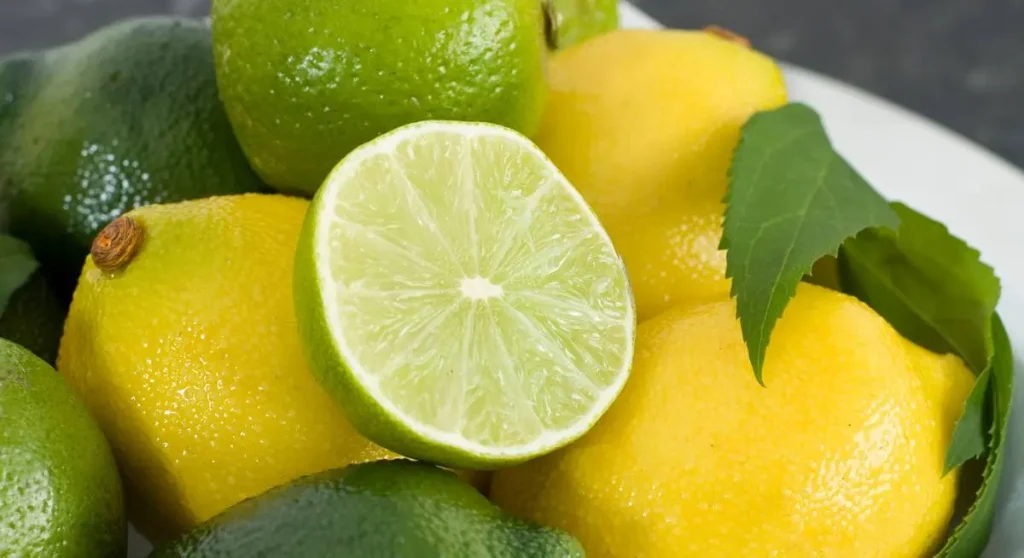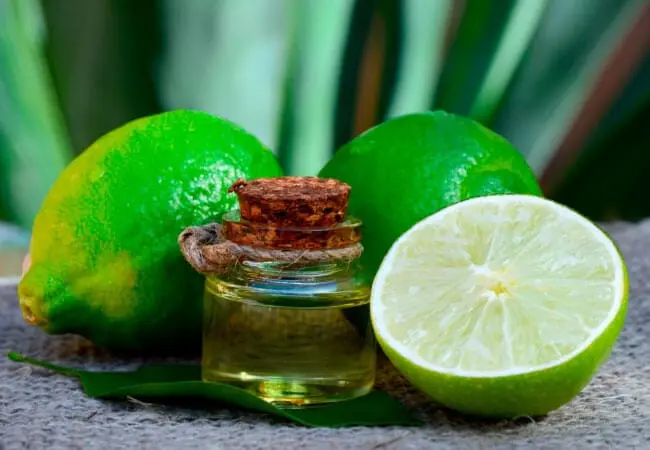Contents
Description
Lime is a great substitute for lemon in many dishes, although the fruit tastes differently. Like lemon, lime is added to tea and served with fish dishes. Grated lime zest adds a special flavor to desserts and sauces.
Lime (lat.Citrus aurantiifolia) is the fruit of a citrus plant native to Asia (from Malacca or from India), genetically similar to lemon. Lime is cultivated in India, Sri Lanka, Indonesia, Myanmar, Brazil, Venezuela, and in West African countries. Lime is supplied to the international market mainly from Mexico, Egypt, India, Cuba and the Antilles.
This older and more “wild” brother of lemon is considered one of the champions in vitamin C content – back in 1759 in the Royal British Navy, its juice (usually mixed with rum) was introduced into the diet as a remedy for scurvy during long sea voyages. Therefore, in the English maritime jargon, the terms are firmly entrenched: lime-juicer is the nickname of both the English sailor and the English ship, as well as lime-juice – to travel, wander.

Columbus’ second expedition in 1493 brought lime seeds to the West Indies, and soon lime spread to its many islands, from where it came to Mexico, and then to Florida (USA).
Lime History
Lime usually refers to the egg-shaped fruit of a small citrus tree. It has a juicy and very sour pulp and a hard skin. For the first time, a green fruit genetically similar to lemon appeared in the Lesser Antilles back in the first millennium of our era.
Today, lime comes to the market mainly from Mexico, Egypt, India and Cuba. There are many varieties of this citrus. For example, oil is most often obtained from the Mexican small fruit.
Composition and calorie content

In terms of its chemical composition, lime is very close to lemon, but somewhat less caloric. Consists of 85% water, carbohydrates, small parts of protein and fat, as well as dietary fiber, vitamins and minerals.
Limes contain fruit acids – citric and malic, natural sugars, vitamins A, E, K, ascorbic acid, potassium, magnesium, phosphorus, manganese, zinc, calcium and selenium. The pulp contains organic substances, which are strong antioxidants that prevent cell aging and rejuvenate the body.
Caloric content 30 kcal
Proteins 0.7 g
Fat 0.2 g
Carbohydrates 7.74 g
Beneficial features of Lime
Lime contains a lot of vitamins C and A, as well as B vitamins. Among the trace elements of this fruit are potassium, calcium, phosphorus, iron. The high content of ascorbic acid and potassium gives lime the ability to strengthen blood vessels. Thanks to calcium and phosphorus, regular consumption of the fruit will help protect teeth from caries and various harmful deposits, and reduce the risk of gum disease.
Pectin, also found in lime, is beneficial for its ability to remove harmful substances from the body. Essential oils normalize the digestion process and improve appetite. Lime is recommended as an excellent remedy for the prevention of diseases of the cardiovascular system. Among other things, lime has a calming effect on the nervous system and improves mood.
Lime Contraindications

Lime juice can cause photodermatitis if the skin in contact with it is soon exposed to direct sunlight. Photodermatitis can manifest as swelling, redness, irritation, itching, darkening of the skin, and even blistering. The same symptoms can occur when the skin comes into contact with lime juice in high concentration (for example, bartenders who constantly use limes to make cocktails often suffer from this).
Like other fruits of this genus, lime is a very strong allergen, and allergies can occur not only after eating the fruit, but also upon contact with a flowering plant.
People with gastrointestinal diseases (peptic ulcer, gastritis) should be especially careful when using limes, since the acids contained in this fruit can exacerbate such conditions.
In high concentration, sour lime juice is capable of destructive effect on tooth enamel, causing it to thin and, as a result, heat sensitivity of the teeth.
People with low blood pressure and “weak” blood are advised not to consume large amounts of limes and other citrus fruits.
How to choose and store limes
Ripe lime fruits look lighter than they appear, firm and firm. The skin should be free of spots, signs of decay, hardened areas, and through damage.
Lime oil

An interesting fact is that the medicinal properties of lime oil are different from those of lemon oil. Lime oil has tonic, bactericidal, antiviral, antiseptic, regenerating and soothing properties. It is used to treat colds and can help relieve symptoms and inflammation. This product can also be used for sore throat, to speed up the treatment of upper respiratory tract problems. It has a beneficial effect on almost all body systems. For example, the product can help with neuroses and tachycardia, stress and psychosomatic disorders.
Cooking applications
Almost all parts of the fruit are used in cooking. Lime juice is used in salads, soups and side dishes. It is used to make cocktails and alcoholic drinks, lemonades or limes. The juice is added to baked goods and pastries. A popular dish from Central and South America is called ceviche. For its preparation, use fish or seafood, pre-marinated in lime juice.
The zest is also used in the preparation of cakes and pies. In addition, it can be found in recipes for main dishes with poultry, fish or meat. Kaffir lime leaves in Thai cuisine are substituted for lavrushka. They are added to curries, soups, and marinades. Often, the sour fruit is also used as an independent snack.
The benefits of lime juice

When comparing lime juice and lemon juice, you will notice that the former has a thicker, richer, sour and harsher consistency, while there is a slight bitterness. Despite the sour taste, the drink will not irritate the gastric mucosa and will not harm the tooth enamel.
The juice helps to reduce the level of “bad” cholesterol in the blood and reduces the risk of atherosclerosis. With regular use, cells will be able to stay young longer, so the aging process of the body will slow down.
The juice contains valuable acids – malic and citric – they promote better absorption of iron and participate in the process of hematopoiesis. Ascorbic acid will help whiten tooth enamel.










Assalomu alaykum jigarni tiklashda ham foydalansa boladimi